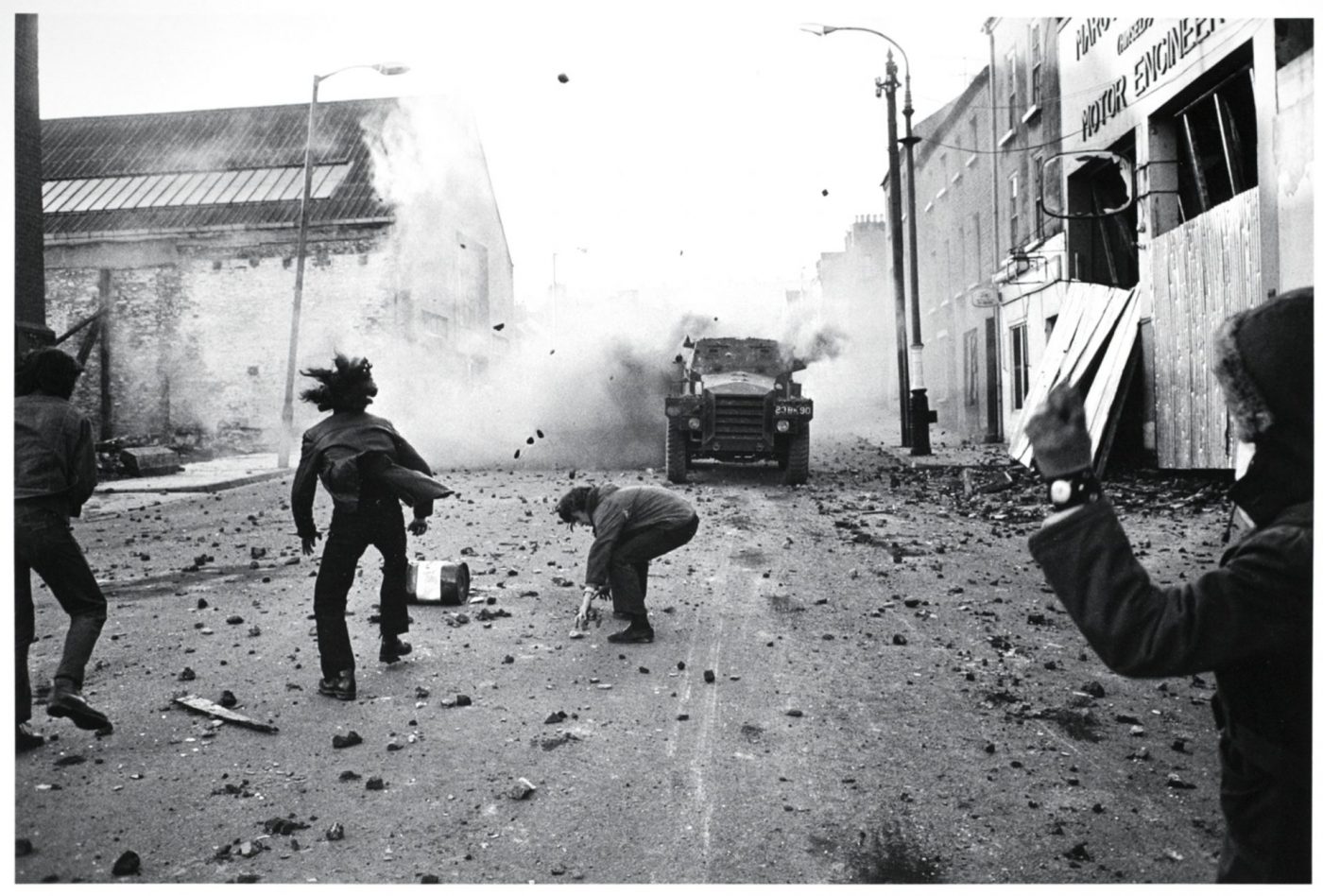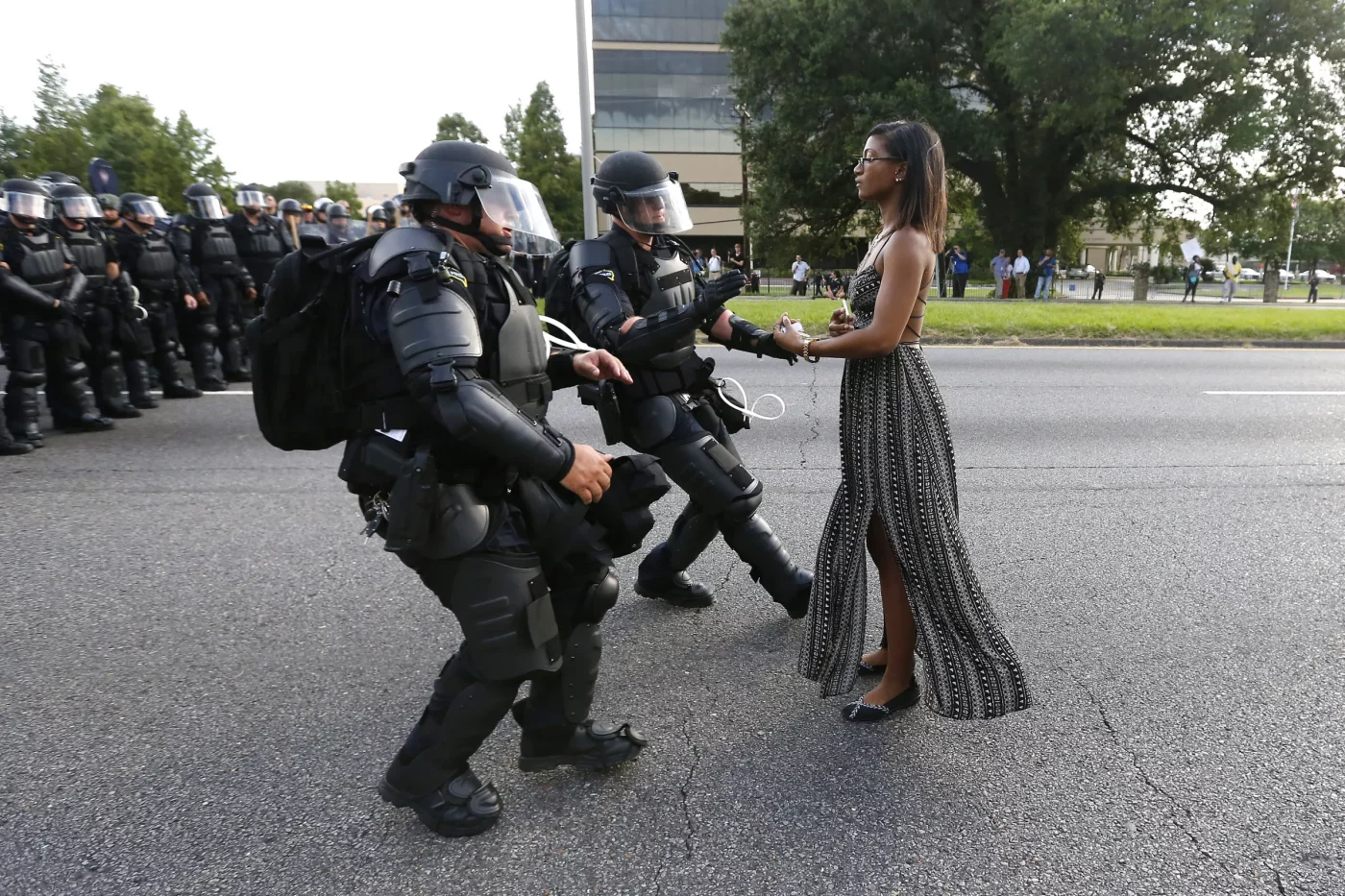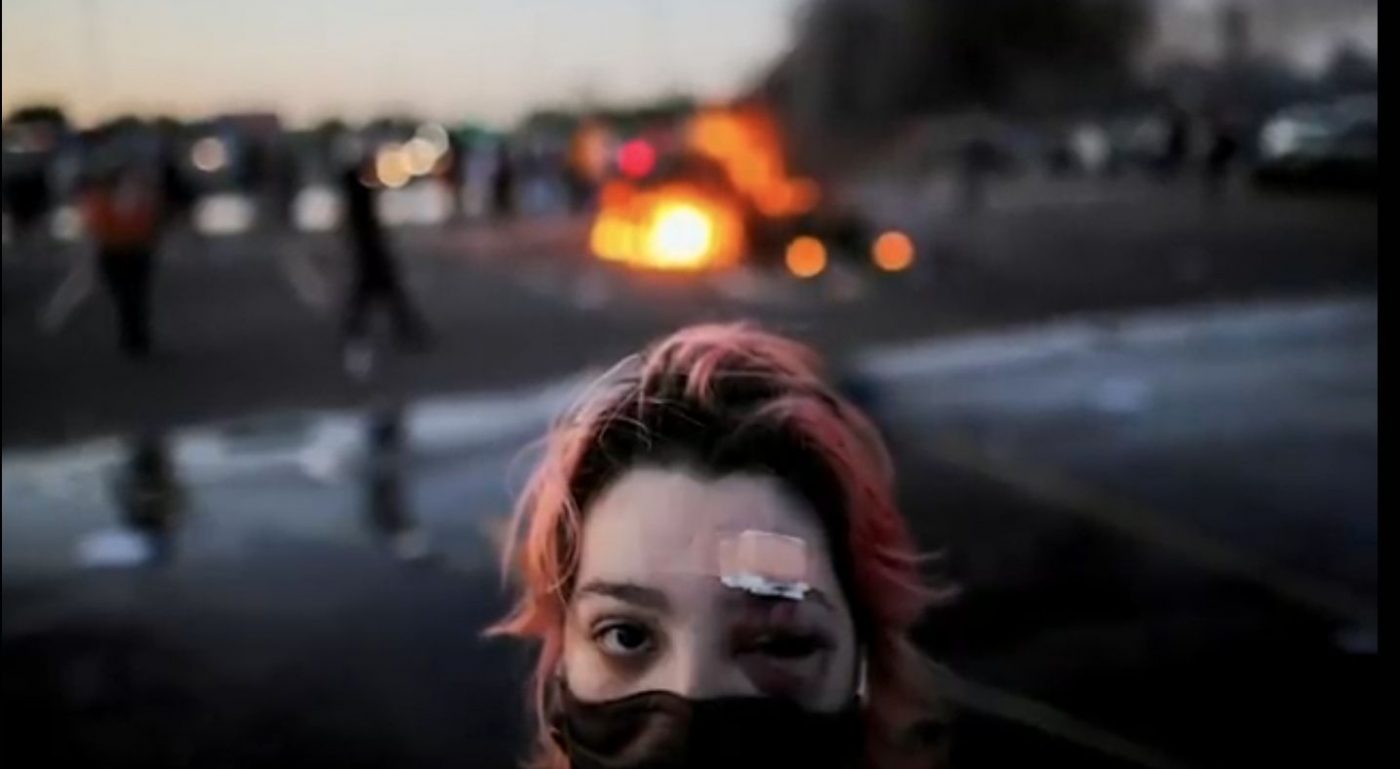Protest photography is a unique blend of art and activism. Its goal extends beyond simply informing the audience; it aims to provoke thought, evoke emotions, and sometimes spark real change. A powerful protest photograph can distil the essence of collective struggle into a single frame, capturing moments of pain, hope, defiance, or solidarity. But what elements truly make a protest photograph impactful and memorable?
Creating a protest photograph that resonates presents both technical and ethical challenges in an age where we are inundated with images, particularly during times of civil unrest. This blog article examines the key attributes of compelling protest photography, focusing on medium, composition, subject matter, and narrative scope. Along the way, we’ll look at the works of notable photographers who have shaped our understanding of protest.
Colour vs. Black and White: Medium as Message
A photographer’s first major decision is often whether to shoot in colour or black and white. Each choice comes with its own emotional resonance. Black and white photography can evoke a sense of timelessness and gravity. By stripping away distractions, it emphasises emotion, expression, and form. A skilled photographer can use this medium to create a documentary-like authority that connects their work to the legacy of past protests.
Take, for instance, Gilles Peress and his series on the Troubles in Northern Ireland. His black-and-white images—stark and unflinching—transform chaos into visual poetry. They draw attention not to surface details, such as flags or signs, but to the raw emotions and interactions of the people involved. On the other hand, colour photography can convey a sense of urgency and realism.

Today’s protests are colourful affairs filled with placards, painted faces, and smoke flares. Colour allows the viewer to feel that energy directly. The red of a bloodied shirt or the blue of police uniforms adds a layer of meaning that can be lost in black and white. Brooklyn-based photographer Ruddy Roye exemplifies this use of colour.
His portraits from Black Lives Matter protests capture the humanity and immediacy of his subjects, using rich, warm tones to reinforce their dignity and the seriousness of their causes. Ultimately, the choice of medium should reflect the story the photographer wishes to tell. Does the image aim to evoke a sense of archival or contemporary style? Universal or specific? Meditative or urgent?
Composition Amid Chaos
Some may think composition is irrelevant, or even impossible, amidst the chaos of a protest. Events unfold rapidly, leaving little room for control. However, the most effective protest images often showcase intentional composition, whether that’s by design or instinct. Composition doesn’t have to follow classical rules to be powerful, but it should serve the message. Lines, framing, negative space, and perspective guide the viewer’s eye, highlighting essential elements within the frame. Consider Garry Winogrand, known for his street photography during the 1960s, including his coverage of anti-Vietnam War protests.
At first glance, his compositions may seem haphazard, with subjects in motion, crowded edges, and tilted angles. Yet, there’s an energy in his framing that captures the spontaneity of the protest; the chaos becomes part of the subject itself. In contrast, James Nachtwey, celebrated for covering conflict and civil unrest, often employs near-symmetrical, painterly compositions, even in chaotic environments. His ability to impose order on disorder lends his work beauty and weight. Yes, composition plays a crucial role, even amid chaos. It acts as the visual language that communicates meaning to the viewer.
Subject Matter: Faces, Symbols, and Scenes
What should a protest photograph focus on? An angry crowd, a solitary, defiant protester, a line of riot police, or the aftermath of tear gas? The answer varies depending on context. Faces are compelling because they humanise the event. A photograph of a crying child, an angry protester, or a resolute elder can forge empathy and connection.
A notable example is Jonathan Bachman’s 2016 image of Ieshia Evans, who stood calmly in a sundress as approaching riot police charged toward her in Baton Rouge. Her composed defiance has become a symbol of peaceful protest. Symbols such as flags, signs, masks, and uniforms carry multifaceted meanings and can situate the moment within a broader socio-political context.

A clever or emotionally charged protest sign may encapsulate the ethos of an entire movement. Broader scenes that showcase crowds, confrontations, or destruction can convey scale and context. They illustrate the magnitude of the protest or the extent of the state’s response, which is crucial for highlighting systemic power dynamics and collective action. The most impactful protest photographs often weave these elements together: a clearly defined subject (whether a person or a moment) surrounded by contextual hints that enrich the narrative.
Can a Single Image Tell the Whole Story?
This is one of the hottest debated questions in documentary photography. Can a single photograph encapsulate the complexity of a protest movement? The answer is both yes and no. Some images truly become iconic, representing an entire movement. The previously mentioned photo of Ieshia Evans, or Marc Riboud’s 1967 image of a young woman offering a flower to armed soldiers at a Vietnam War protest, exemplifies this.
These photographs are emotionally and compositionally powerful enough to capture a historical moment. However, these images are exceptions rather than the rule. Most protests are complex, multi-layered events involving various actors, motives, and consequences. A single image may capture one aspect of a protest but fail to convey the whole narrative. This is why many protest photographers strive to create a body of work—a series of images together offers a nuanced portrayal of the event.
Susan Meiselas’ documentation of the Nicaraguan revolution serves as a prime example. While one photo might show a Molotov cocktail mid-flight, others depict quieter moments, funerals, or the faces of those caught amid conflict. Together, these images form a more complete and honest account. In the age of social media and short attention spans, the power of a single-image story persists. Yet, a sustained documentary approach is often more effective for lasting impact and historical significance.
Ethical Considerations: Consent, Representation, and Risk
No discussion of protest photography is complete without addressing the ethical landscape. Photographing individuals in vulnerable or confrontational situations raises essential questions about consent and safety. Should you show the faces of protesters who may face retaliation? Should you intervene if someone is in danger? Does your presence influence the unfolding events? Many contemporary protest photographers choose to blur faces or omit full identifiers when publishing images, particularly in authoritarian settings.
This practice protects subjects but can also dehumanise them, creating a dilemma without straightforward solutions. Philip Montgomery, known for his work in Ferguson, Missouri, adopts a deeply empathetic approach, often spending time with his subjects before and after protests. His images resonate not only due to their visual strength but also because they feel ethically grounded and emotionally truthful. Photographers must strike a balance between storytelling and a sense of responsibility. The goal is not merely to secure “the shot,” but to honour the truth and dignity of the moment.
The Role of the Photographer: Observer or Participant?
Some argue that photographers should remain passive observers, while others assert that they are, inevitably, participants in the process. Documenting a protest can influence its outcome by attracting media attention, legitimising a cause, or escalating tensions. Many celebrated protest photographers, such as Sebastião Salgado, navigate this fine line. Their work is informed by strong personal convictions while still maintaining journalistic integrity. Although not neutral, Salgado’s photographs of displaced peoples and social unrest are honest representations of the human experience.
In recent years, citizen photojournalism has democratised the practice of protest photography. Smartphones have turned every protester into a potential documentarian. While this proliferation of visual content has benefits, it also highlights the value of trained photographers who can sift through the noise to deliver images of lasting artistic and historical merit.
Conclusion: The Anatomy of a Powerful Protest Photo
A powerful protest photograph captures a decisive moment, something fleeting yet profoundly significant. Evoking emotions of rage, sorrow, joy, or defiance. It is visually compelling due to its composition, medium, or subject. Providing context, either within the frame or through a broader series, and respecting its subjects ethically and representatively. Ultimately, protest photography serves as both a form of witnessing and a call to action. It serves as a reminder that behind every slogan and statistic is a human story. In the right hands, a camera can be a powerful tool of truth, as potent as any chant or banner.
Carlos Barria’s photograph captures the raw human cost of protest with haunting clarity. A wounded demonstrator stares directly into the camera, framed against a blurred backdrop of fire and chaos. The shallow depth of field focuses on the subject’s injury and quiet resilience, emphasizing personal suffering over spectacle. Muted colours and twilight lighting heighten the scene’s emotional weight, making this an intimate and powerful portrayal of vulnerability amidst unrest.

Often, a good protest photograph should ask more questions than it answers.
In powerful protest photography, ambiguity and emotional complexity invite the viewer to engage more deeply with the subject matter. When an image raises questions — What happened here? Who is this person? What led to this moment? It resists being reduced to a simple slogan or a single narrative. Instead, it opens up space for reflection, empathy, and critical thinking. If a protest photograph only provides answers, showing clear “villains” and “heroes,” for instance, it can risk feeling didactic or emotionally flat.
But when a photograph leaves room for uncertainty or multiple interpretations, it respects the complexity of the situation and the intelligence of the audience. It can mirror the messy, unresolved reality of most social struggles.
Carlos Barria’s photo is a good example: we see pain and destruction, but not a clear story of how or why. That tension, that gap pulls the viewer in.
- Questions it raises: What happened to her? Why was she injured? What does the fire behind her signify?
- Why it works: The lack of explicit narrative leaves viewers emotionally unsettled, encouraging them to seek understanding beyond the surface.